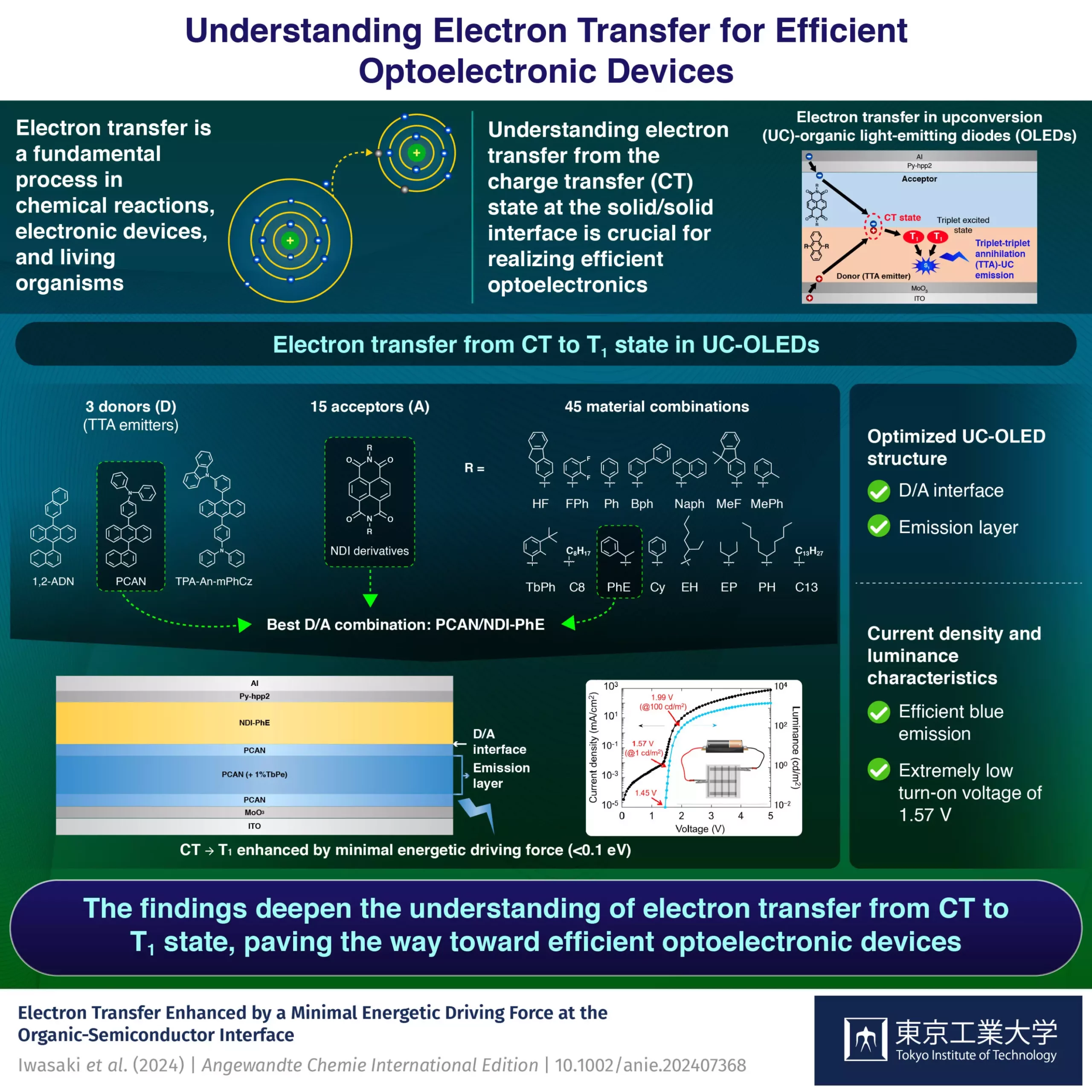Electron transfer is a critical process that involves the movement of an electron from one molecule or atom to another. This transfer plays a crucial role in chemical reactions, electronic devices, and even biological organisms. Understanding the steps involved in electron transfer at a solid/solid interface is essential for improving the performance of organic optoelectronic devices, such as OLEDs and organic photovoltaics, which are widely used in digital displays and portable electronics due to their lightweight and flexible nature.
One key intermediate step in the operation of these devices is the charge transfer (CT) state, where there is a weakly bound electron-hole pair at the donor/acceptor interface. To enhance the efficiency of these devices, it is crucial to have a deep understanding of the energetic and structural factors influencing electron transfer steps. This can be achieved through experimental studies of electron transfer reactions, using theories like the Marcus theory, which explains electron transfer based on energetics and structures.
Recent studies have introduced the concept of upconversion OLEDs (UC-OLEDs), which utilize electron transfer from the CT state to a triplet excited (T1) state through a process called triplet-triplet annihilation (TTA). This mechanism has the potential to reduce the turn-on voltage of blue UC-OLEDs significantly, addressing issues like high driving voltage and low stability.
A team of researchers from Japan, led by Associate Professor Seiichiro Izawa from the Laboratory for Materials and Structures at Tokyo Institute of Technology, conducted a study on electron transfer efficiency from the CT state to the T1 state in 45 UC-OLEDs. Their findings, published in the journal Angewandte Chemie International Edition, revealed that the electron transfer from the CT state to the T1 state is enhanced by a minimal driving energetic force, less than 0.1 eV.
Through their systematic analysis of different UC-OLEDs using 45 material combinations, the researchers identified a novel donor-acceptor combination, PCAN/NDI-PhE, which led to the fabrication of an efficient blue UC-OLED with an extremely low turn-on voltage of 1.57 V. This discovery not only contributes to the development of more efficient UC-OLEDs but also provides insights into the mechanisms underlying electron transfer in organic optoelectronic devices.
Electron transfer plays a pivotal role in the operation and efficiency of organic optoelectronic devices such as OLEDs. By investigating the process of electron transfer from the CT state to the T1 state, researchers can enhance the performance of these devices, leading to advancements in digital displays and portable electronics. The study conducted by Dr. Izawa and his team sheds light on the importance of understanding electron transfer mechanisms and highlights the potential for developing more efficient and stable UC-OLEDs in the future.


Leave a Reply